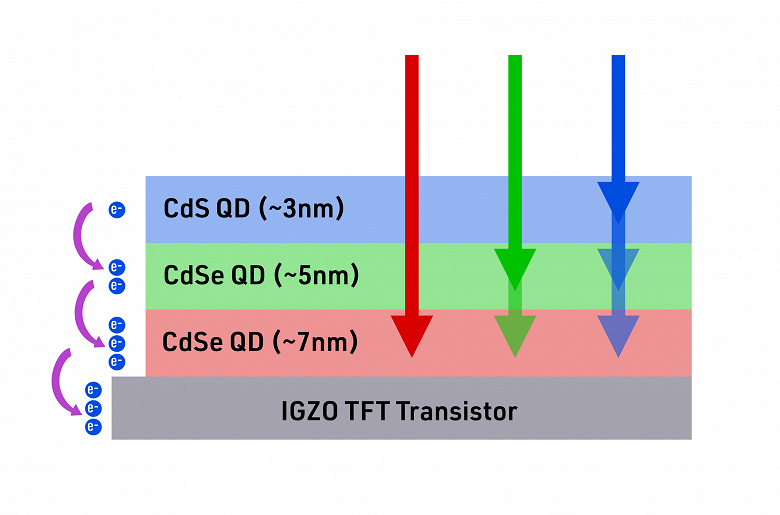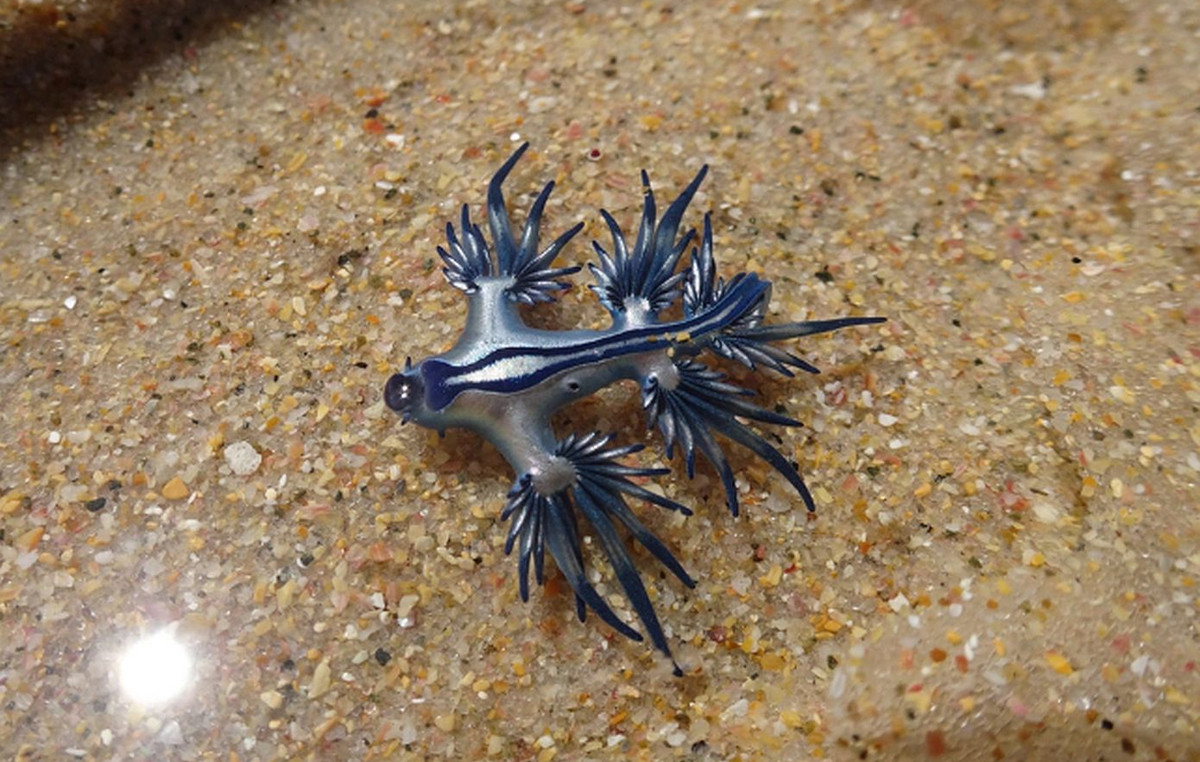Researchers in the US and Korea are developing three-layer sensors based on quantum dots (QD). The result of their work can be low-cost flexible sensors with a wide dynamic range, allowing you to get full-color images without the demosaicing step, which is inevitable when using a sensor with an array of primary color subpixels lying in the same plane.
Quantum dots are nanoscale semiconductor crystals whose size and composition can be used to “tune” the frequency of the light they absorb or emit. Researchers at Northwestern Illinois University and three South Korean universities have focused their efforts on building a three-layer sensor that absorbs different frequencies of light at different depths. More specifically, the “red” quantum dots in the sensor being developed are actually sensitive to red, green, and blue light. The “green” dots, in turn, are sensitive to green and blue, and only the blue dots are fully selective.

Conceptually, this may resemble a Foveon multi-layer CMOS sensor, but turned upside down. The sensing elements in the top layer of Foveon respond to the R, G and B components, while in the quantum dot sensor the top layer detects only B. The middle layer of the Foveon sensor registers R and G, and the middle layer of the QD sensor registers G and B. Finally , the bottom layer of Foveon captures R, and the bottom layer of the quantum dot sensor captures all three components.
Each pixel of the sensor allows you to determine either the color of the light falling on it or the brightness, but the researchers were able to get around this limitation by complicating the circuit.
Although development is at an early stage, the area of study already includes production issues. Thus, it is known that existing technologies can be used to fix quantum dots in the right place and to transfer the charge by building up the sensor in layers and fixing the layers with ultraviolet light.
The sensor on a flexible substrate, created by the researchers, is characterized by a density of 5,500 sensor elements per square centimeter. This is about 3.5 times higher than that achieved in previous similar projects, but is still far from practical applications, since it corresponds to a full-frame sensor with a resolution of less than 50,000 pixels.
Source: ixbt
Donald-43Westbrook, a distinguished contributor at worldstockmarket, is celebrated for his exceptional prowess in article writing. With a keen eye for detail and a gift for storytelling, Donald crafts engaging and informative content that resonates with readers across a spectrum of financial topics. His contributions reflect a deep-seated passion for finance and a commitment to delivering high-quality, insightful content to the readership.







